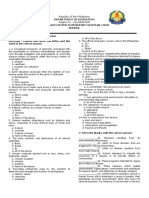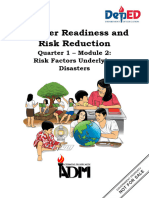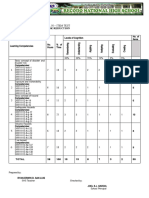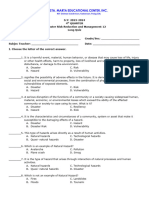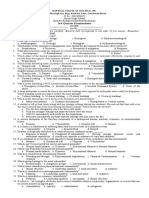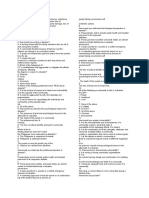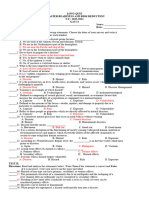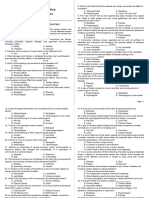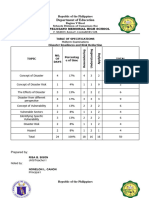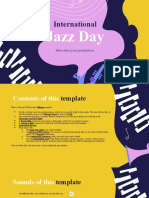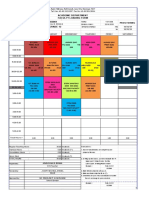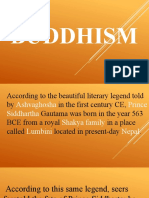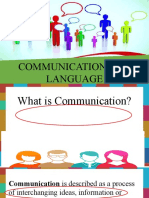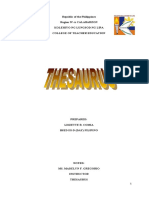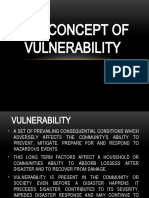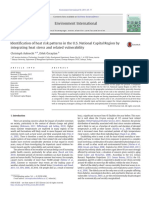0% found this document useful (0 votes)
335 views3 pagesDIRR
This document is a quarterly exam for a disaster risk reduction course. It contains a multiple choice section testing definitions of terms like disaster risk, vulnerability, hazards, and approaches to risk assessment. There are also identification, enumeration, and diagramming questions assessing comprehension of concepts. The exam was prepared by an instructor at AMA Computer College and approved by administrative staff to test student understanding of disaster risk reduction topics.
Uploaded by
JP RoxasCopyright
© © All Rights Reserved
We take content rights seriously. If you suspect this is your content, claim it here.
Available Formats
Download as DOCX, PDF, TXT or read online on Scribd
0% found this document useful (0 votes)
335 views3 pagesDIRR
This document is a quarterly exam for a disaster risk reduction course. It contains a multiple choice section testing definitions of terms like disaster risk, vulnerability, hazards, and approaches to risk assessment. There are also identification, enumeration, and diagramming questions assessing comprehension of concepts. The exam was prepared by an instructor at AMA Computer College and approved by administrative staff to test student understanding of disaster risk reduction topics.
Uploaded by
JP RoxasCopyright
© © All Rights Reserved
We take content rights seriously. If you suspect this is your content, claim it here.
Available Formats
Download as DOCX, PDF, TXT or read online on Scribd
/ 3



